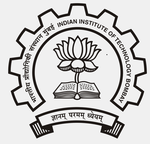Electronics Lab - 3: Digital Electronics
Prerequisites for this lab
- Electronics Lab: 1+2 Basic and Analog Electronics(EP215, EP212 Physics department courses)
- Transistors (MOSFETs) and Opamps
- Boolean algebra - basic theoretical background is required. The understanding is developed through extensive hands-on experience with digital circuits.
- Some familiarity with advanced concepts in digital circuits like Karnaugh maps is desirable, but not necessary. Many students learn these in minor courses in EE concurrently with the lab.
- Concepts of finite state machines. Treated at an elementary level in this lab course and advanced in the following course on microprocessor control systems.
Syllabus
An excellent hands-on review book for digital circuits is the eBook BeBop to the Boolean Boogie by Clive Maxfield.
This laboratory syllabus focusses on digital gates and memory elements: AND,OR,NOT,XOR, D-register and some flipflops. It is very application oriented. Instead of verifying truth tables of gates (which can be tedious), we explain the concept of truth tables in an accompanying lecture and provide the students with a handy reference. The gates are directly used in making and testing complex circuit designs. Highlights of the syllabus are:
- Introduction to digital logic gates: NOT, AND, OR etc. Difference between and TTL and CMOS family devices emphasizing:
- Voltage levels
- Power consumption and speed
- Difference between combinational Logic and sequential logic. In combinational logic, inputs are outputs are directly computed through some digital logic applied to the inputs (with some small delay). In sequential logic, intermediate calculation results are stored in memory and reused later.
- Measurement of delay in signal propagation through digital gates using Ring Oscillator made of odd number of NOT gates.
- Simple pplications of sequential logic. For example:
- Detect phase shift between two pulse trains
- Binary addition with carry
- Finite State Machines: conceptual basis of Moore and Mealy design of finite state machines.
- Optimized design of finite state machines using Karnaugh maps (optional, depends on student preparation)
- A few applications of finite state machines. For example:
- Level to Pulse converter (keyboard key stroke capture)
- Elevator control system
- Traffic lights control at a busy highway junction
- Digital to Analog Converter. Design and applications. R-2R DAC can be explored in Electronics Lab 3. More complex designs (eg. Sigma-Delta DAC) are left to be explored in Microprocessors lab.
Representative experiments
Note: The assignments are set up in modular form. Students fill out answers in the provided space.
Marks are alloted by the teaching assistants as they complete each module. At the end of the session the students submit
the completed assignment and the marks are entered into a spreadsheet by the lab staff. There is no journal writing/correction required.
Close to the end-semester exam, the solved assignments are put up on Moodle for students to revise.
There is an element of surprise as the students don't know the exact problem they will work on when they arrive for a lab session.
They are given a review of the concepts involved in the preceding lecture. Hence it is important to co-ordinate the timetable such
that the lecture session occurs a few days before the lab session.
Discussion among the members of each group is encouraged during the lab session. The teaching assistants are required
to invigilate such discussions and mark the completed work based on the perceived contribution of the student to the group's work.
You are free to add new components to the experiments or suggest new experiments. When editing these assignment sheets, it
is suggested that you use MS Word 2010 on MS Windows. Unfortunately using other word processors or other OS
(Linux LibreOffice, MacOS Word etc) causes unwanted changes in the alignment of figures in the page layout.
Hence system agnostic PDF files are also provided.
| No. | Experiment | docx | |
|---|---|---|---|
| 1 | Ring oscillator - propogation delay in digital gates | P, S | P |
| 2 | Phase detector - introduction to D register | P, S | P |
| 3 | BCD adder | P, S | P |
| 4 | IC 555 timer and applications | P, S | P |
| 5 | Finite State Machine (simple) - Elevator control | P, | P |
| 6 | Finite State Machine (advanced) - level to pulse converter | P | P, S |
| 7 | Digital to Analog converter | P, S | P |
| 8 | Linear Feedback Shift Register - generate random numbers (may require two sessions) | P, S | P |
Lecture notes
The lectures must be focused on the content of the experiments you plan to proceed with during the semester. This a collection of lecture notes used to highlight some of the core concepts.
